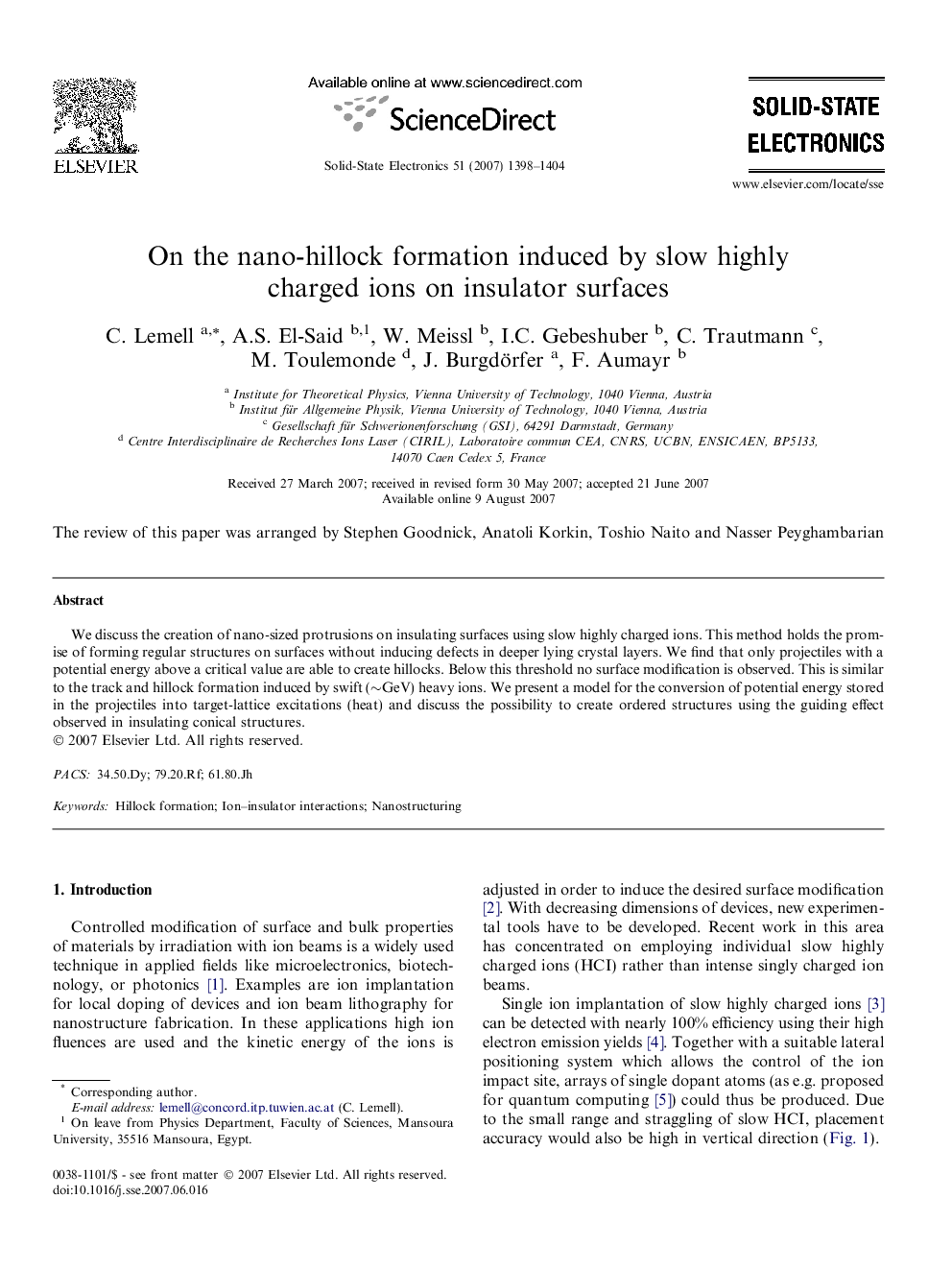| Article ID | Journal | Published Year | Pages | File Type |
|---|---|---|---|---|
| 749391 | Solid-State Electronics | 2007 | 7 Pages |
Abstract
We discuss the creation of nano-sized protrusions on insulating surfaces using slow highly charged ions. This method holds the promise of forming regular structures on surfaces without inducing defects in deeper lying crystal layers. We find that only projectiles with a potential energy above a critical value are able to create hillocks. Below this threshold no surface modification is observed. This is similar to the track and hillock formation induced by swift (∼GeV) heavy ions. We present a model for the conversion of potential energy stored in the projectiles into target-lattice excitations (heat) and discuss the possibility to create ordered structures using the guiding effect observed in insulating conical structures.
Keywords
Related Topics
Physical Sciences and Engineering
Engineering
Electrical and Electronic Engineering
Authors
C. Lemell, A.S. El-Said, W. Meissl, I.C. Gebeshuber, C. Trautmann, M. Toulemonde, J. Burgdörfer, F. Aumayr,
